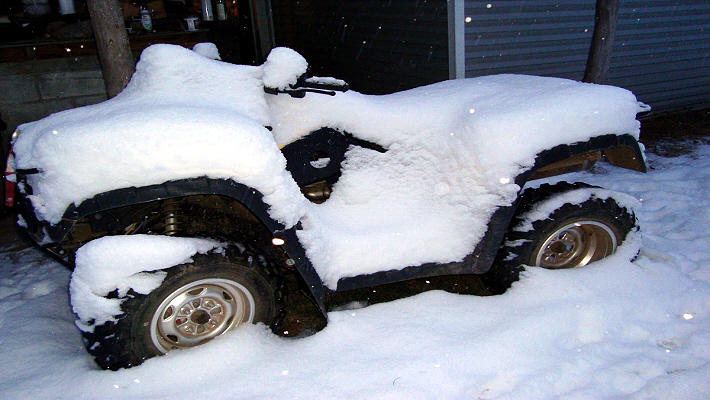Ask the Editors: ATV Winter Hibernation
Unless you enjoy replacing expensive batteries, the first investment we’d make would be for a good battery tender/ maintainer/ trickle charger.
Next we offer up some tips that work for long-term storage and simple winter hibernation alike:
Stabilize that Fuel
There are two schools of thought when it comes to the fuel system of your ATV- some insist that draining the tank and running the machine out of fuel is the best choice for storing an ATV and we agree if you’re looking at a long-term storage situation. If, on the other hand, you’re just putting it away for a few snowy months, you’re actually better off simply filling the tank with stabilized fuel. The reason for this is an empty tank, especially in cold conditions, can accumulate condensation that gathers at the bottom.
In either scenario, quality fuel stabilizer is essential.
Tires
All pneumatic tires lose air over time; a process that is accelerated by changes in ambient temperature. Because you don’t want your machine sitting on flats (which makes flat spots on the tires and means that your quad is actually sitting on its rims), get the quad off the ground if possible. An MX stand under the engine cradle, stack of cinder blocks, even small automotive jack stands can work just fine- especially in a long term storage situation.
If, however, you’re storing it short term you can get away with over-inflating the tires by roughly 8 PSI each to compensate for the loss of pressure over time.
Fluids
If you’re really fastidious, change the engine oil before putting it away. Fresh oil flows better than old, thick stuff and will ensure that all of your internals stay well lubed even if the temps dip well below freezing. While this step is optional, be sure to top off your brake fluid in the master cylinders. The reason for this is that brake fluid absorbs water from the very air around us the moment you open the bottle. If your reservoirs are low, that leaves more space for water to accumulate. Top them off and if the fluid is old and cloudy, change it.
Also don’t forget to check the radiator is your ATV is liquid-cooled. If it’s low or you ran water in the summer months, be certain to fill with quality antifreeze. This step is paramount as cracked water lines or even engine blocks can result if water within the system is allowed to freeze solid.
Lube
Lastly it’s not a bad idea to lube cables, junctions and levers before tucking your machine away to combat rust and stiffening over time of inactivity.


